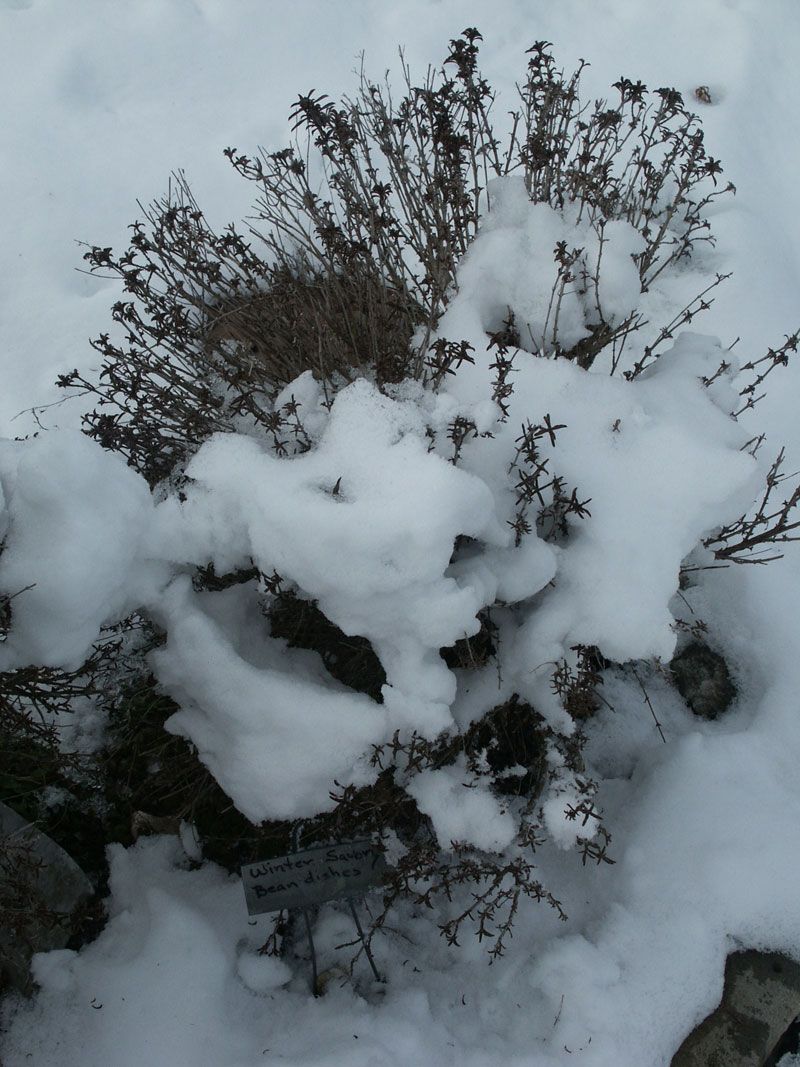
I believe that savory is an underused herb in America; it is easy to grow and provides a wonderful piquancy. It is featured in my Veggie Chili recipe along with garlic, cilantro, parsley, hot peppers and bittersweet chocolate—so cook this warming winter dish for your valentine!
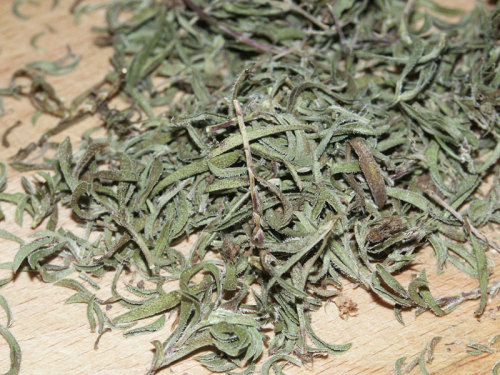 |
|
| The leaves of dried savory are rather needlelike. Store them whole, and crumble into your recipe as needed. |
The savories are some of the most amenable and useful herbs in our gardens. They are as adaptable in their growing requirements as in the dishes they flavor. Both winter savory (Satureia montana) and summer savory (Satureia hortensia) are famous for their affinity with beans. I agree they add much to bean dishes, but do not limit their use to this. These herbs are delicious with cabbage and Brussels sprouts, very good with meats, especially pork and veal, and wonderful with corn. They offer tomatoes a nice change from basil and marjoram or oregano, and potatoes a rest from parsley and chives.
Without changing the nature of a bouquet garni, either savory can be used to strengthen mild herbs or to provide a softening effect to the more robust herbs. In fact, summer savory has a flavor reminiscent of aromatic marjoram and thyme together, a blend of sweet and spicy tastes. In winter savory the peppery and resinous tones dominate, giving it a heartier character.
In the past, savory poultices were used for the treatment of colds and chest ailments and savory teas were given for colic and flatulence. Perhaps this use influenced German cooks to always add savory, which they call Bohnenkraut, the bean herb, to bean dishes. But the savories offer even more virtues to the cook: versatility, ease of combining with other herbs, good flavor when dried, and the bonus of being easy to grow.
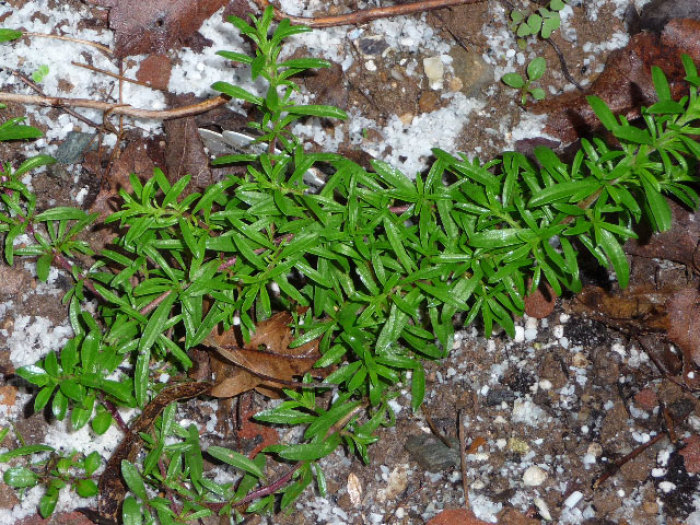 |
|
| Winter savory. |
Both winter and summer savory have a modest but pleasant appearance. Winter savory is a perennial, growing about ten to twelve inches tall with thickly set, glossy deep green leaves. It is well shaped and decorates our permanent garden, especially when covered with small blossoms that the bees hover for hours. Summer savory must be seeded every year. This annual may grow up to two feet tall with tender reddish-purple stems that have a tendency to droop. The leaves are green, often lightly tinged with red, and are spaced widely apart. The flowers of both plants are delicate, ranging in color from white through pale pink and lavender blue.
 |
|
| This hearty, satisfying chili is made with tofu or tempeh. Get the recipe. |
Winter savory is hardy and will grow almost anywhere. A place in full sun will produce fine winter savory if the roots are kept moist and the leaves are kept dry. This bushy plant grows fairly slowly and will bear fewer leaves after two or three seasons. Root division or layering (covering part of a stem with about an inch of soil to produce new roots) are the best ways to keep a healthy supply of winter savory.
The savories dry very well, keeping much of their essential oils. I dry some of each variety in the same way, by spreading the sprigs on screens or in flat baskets, or by hanging several stems together upside down in a dry place away from the sun. Summer savory is best when the first harvest is taken before the plants flower. The whole plant can be pulled up and dried in late summer. Winter savory can be cut back throughout the summer, but again, it is best harvested just before flowering. I look forward to using this robust winter savory in my warming winter dishes.
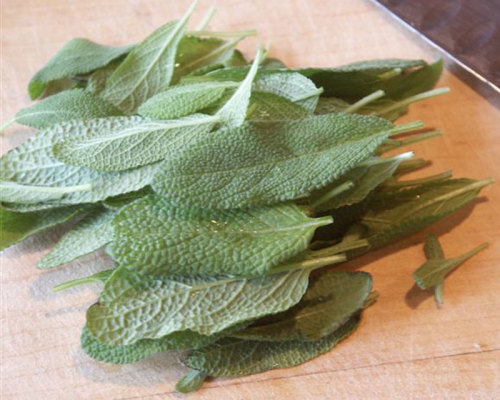 More robust herbs More robust herbs
• Using Sage in Warming Winter Dishes |


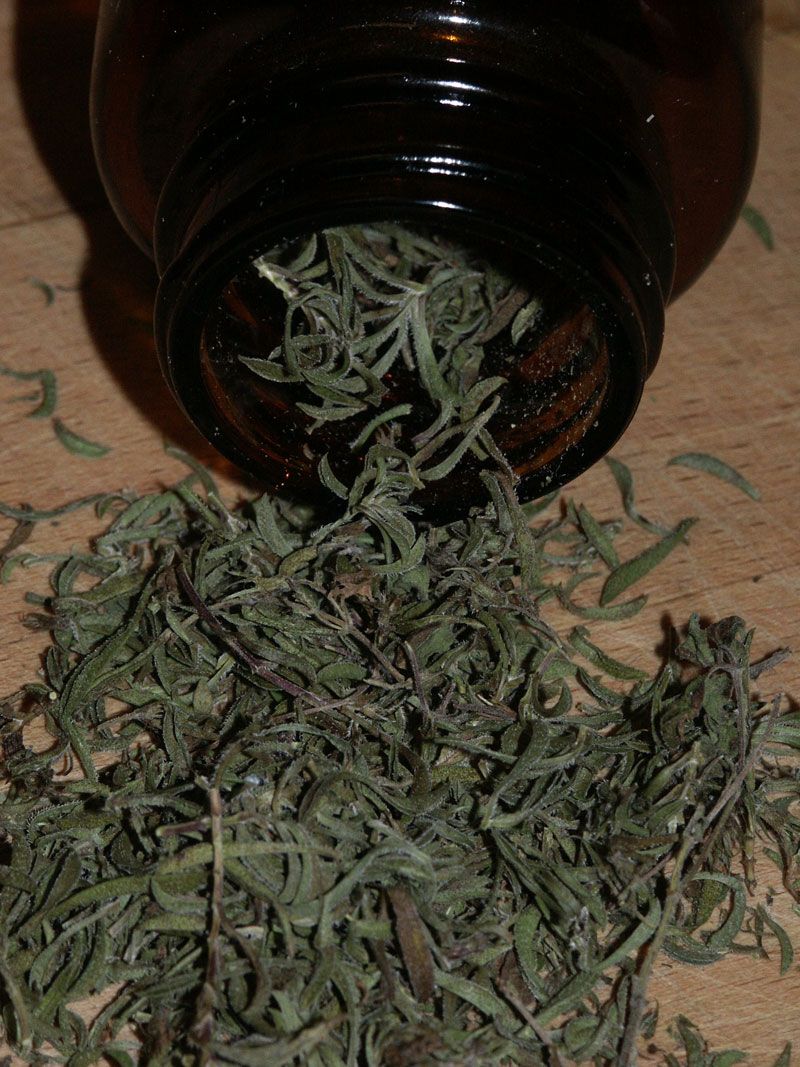

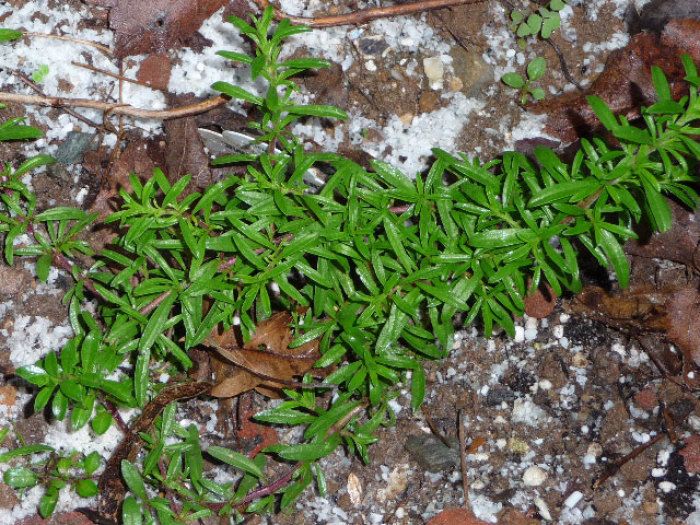
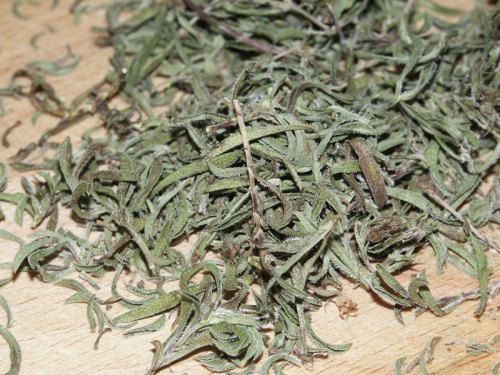
















Comments
Log in or create an account to post a comment.
Sign up Log in